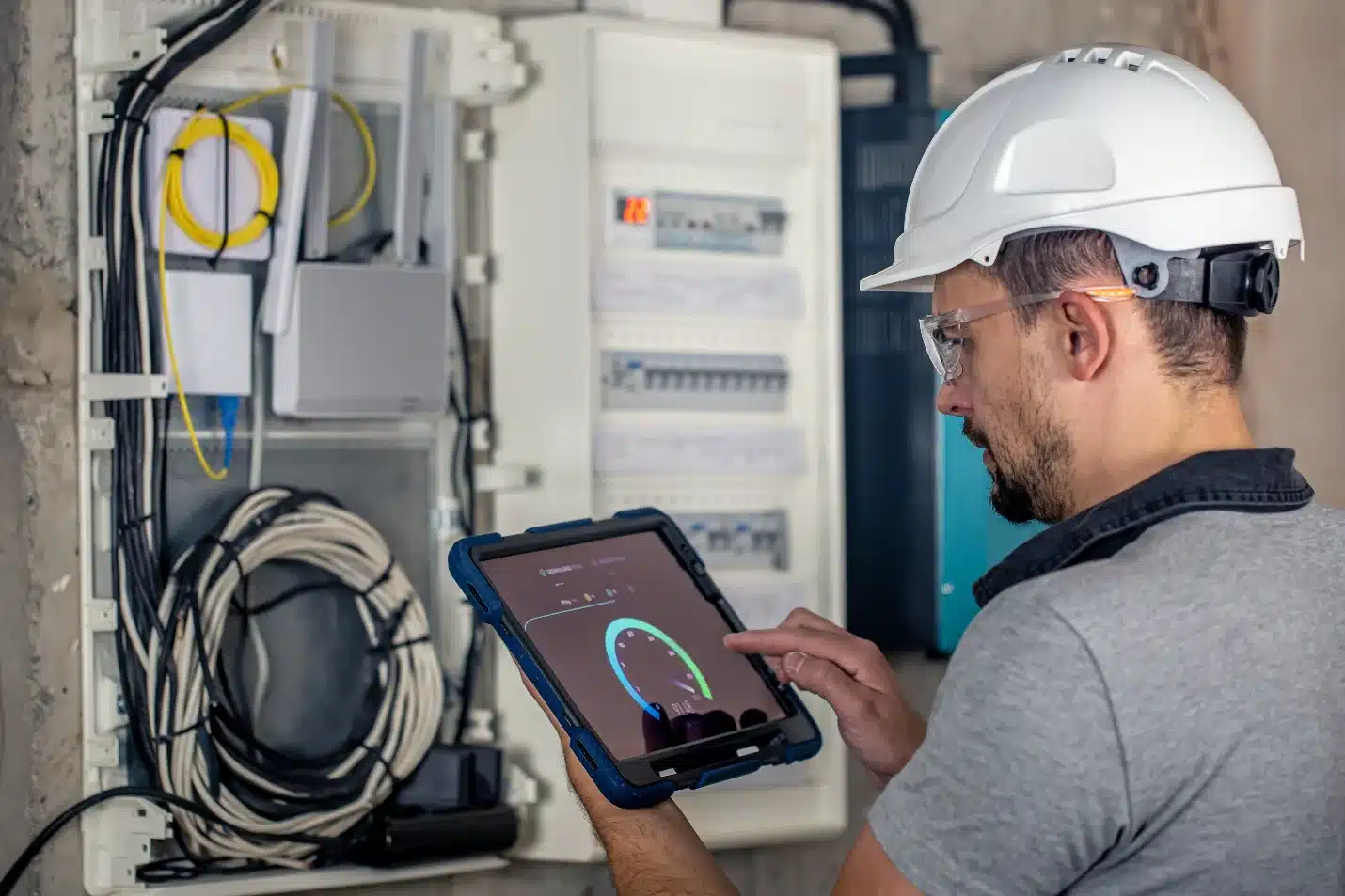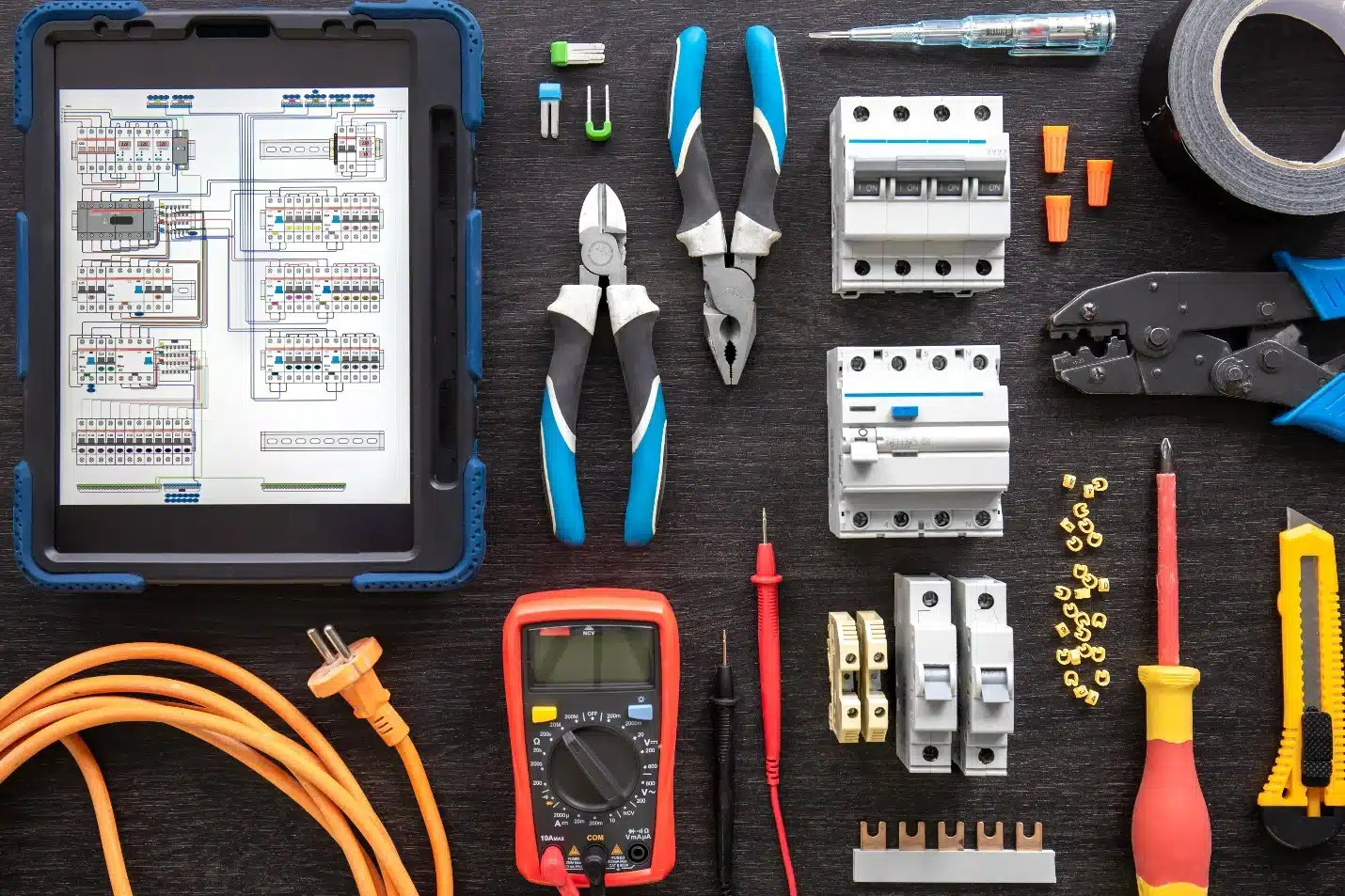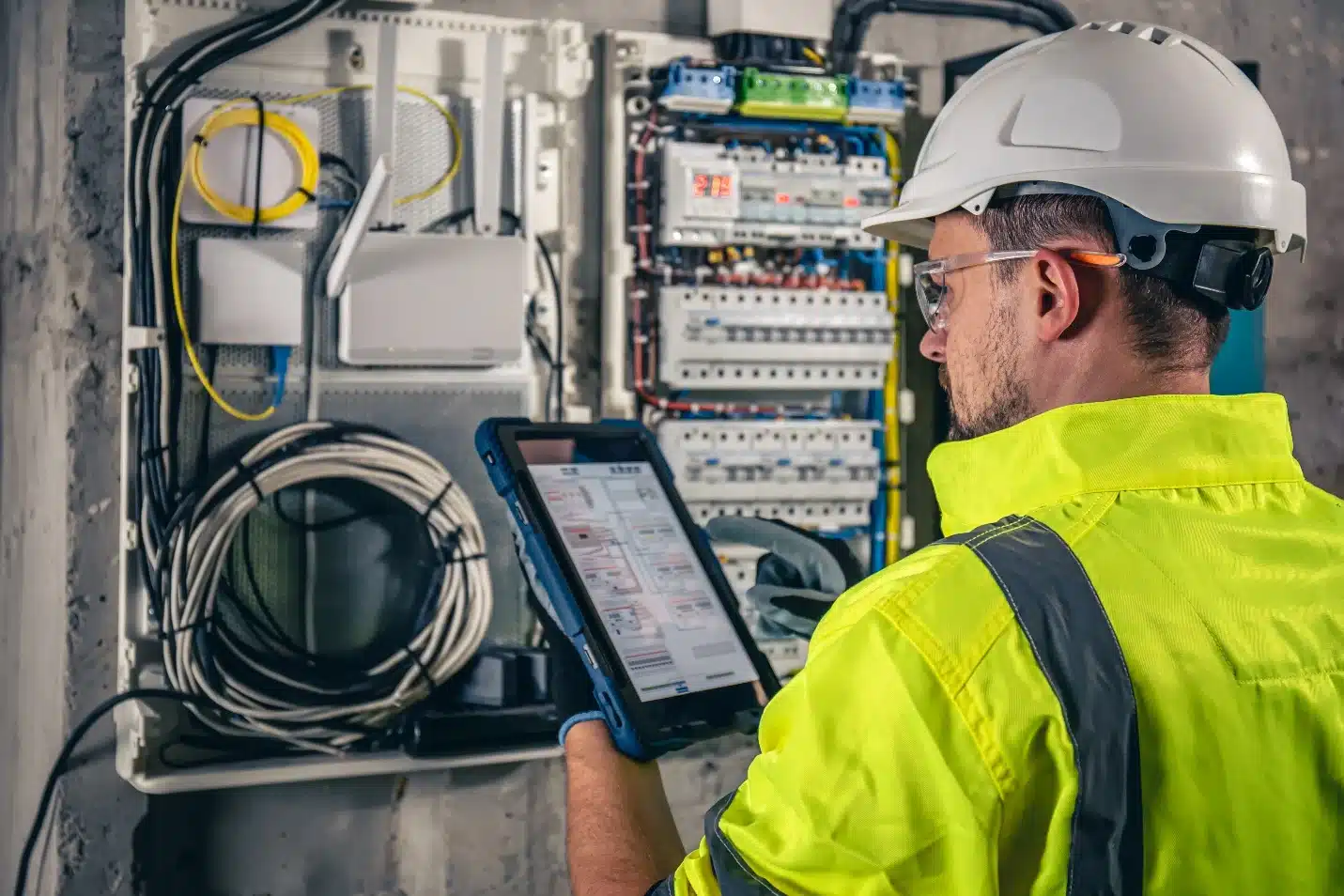Summary
Commercial electric load calculations are essential for designing, installing, and maintaining electrical systems in your building. They also contribute to safety, continuous business operations, cost reductions, and regulatory compliance.
Table of Contents
Introduction
Commercial electrical load calculation is essential to ensure the safe and efficient operation of electrical systems in a commercial building. These calculations determine the total electric load a system can support, using the result to guide the design, installation, and maintenance of electrical infrastructure.
Load calculations are more complex in a commercial setting due to the size of the building, the number of electrical appliances and devices, and multiple safety standards that must be complied with.
In this article, we will explain the process of calculating the load of your commercial building, the benefits of such calculations, and the tools that will ensure accurate results.
What is an Electric Load?
An electric load is any device that consumes electrical energy and converts it into another form, such as heat, light, or motion. Some examples of electric loads include light bulbs, electric motors, and office equipment such as computers and printers.
Electric load is also the total electricity required to operate an appliance. It is measured in watts (W) or kilowatts (kW).
Types of Commercial Electric Loads
Electrical loads are broadly divided into three types. They are:
1. Resistive Load
This refers to any electric device that contains a heating element. A resistive load obstructs energy flow in a circuit, converting it into thermal energy. Examples of resistive loads in a commercial building include lighting fixtures such as tubular fluorescent, compact fluorescent, T5 fluorescent, and LED lights. Other examples include office heaters, coffee makers, etc.
2. Inductive Load
These devices use the magnetic field for all the work. An inductive load has a coil that stores magnetic energy when current passes through it. Examples of inductive loads in a commercial building include air conditioners, generators, transformers, motors (elevators, escalators), refrigerators, speakers, etc.
3. Capacitive Load
Capacitive loads store electrical energy in an electric field and release it when needed. Unlike resistive and inductive loads, they are not common appliances and are mainly used for power factor correction in commercial buildings.
Capacitors help balance the electrical system, improve voltage stability, and reduce energy losses. They support other loads by lowering reactive power demand, which can help you save on energy costs and improve system efficiency.
Calculating Commercial Electric Load

Electrical load calculation for commercial buildings is more than simply adding up the wattage of devices. It involves applying standardized procedures for various load types, usage patterns, and safety margins, all in compliance with the National Electrical Code (NEC) Article 220.
Basic Formula
At its core, electrical load is calculated using the formula:
P = V × I. Where P = Power (watts or kilowatts), V = Voltage (volts), and I = Current (amps).
However, in commercial settings, electrical systems usually run on alternating current (AC), where power factor (PF) affects the actual usable power. Therefore, the real power calculation includes the power factor:
P = V x I x PF
Power factor accounts for inductive or capacitive loads. This makes load calculations more accurate and ensures proper sizing of electrical equipment.
Step-by-Step Process
For accurate load calculations, follow these steps:
- Identify All Loads: List every electrical device in your building, from lighting systems, receptacles, HVAC equipment, motors, elevators, and office equipment.
- Apply NEC Demand Factors: NEC Article 220.42 to 220.55 outlines how to apply demand factors based on load types. For lighting loads, multiply your building area by the prescribed volt-ampere (VA) per square foot, then apply demand factors. And for general receptacles, use 180VA per outlet.
- Apply Continuous Load Adjustment: According to NEC, a continuous load (expected to run for 3 hours or more) must be calculated at 125% of its actual load. This is especially relevant for lighting and HVAC systems as it ensures wiring and breakers can safely handle the extended current without overheating.
- Consider Load Diversity: This recognizes that not all electrical devices operate at the same time. Applying demand factors from the NEC reduces the total load calculation to a realistic level, preventing oversizing of equipment and saving costs.
Benefits of Calculating a Commercial Building’s Electrical Load

There are many benefits to load calculations. Apart from supporting optimal electrical system performance, it also ensures compliance and promotes future expansion. Here are more:
- It supports the electrical system: Knowing the total electric load of your building helps ensure that the power supply and distribution systems are correctly sized and configured to handle the load. It also helps prevent common electrical hazards such as overloaded circuits, electric shocks, equipment damage, and even fires.
- It improves energy efficiency: Electrical panel load calculation lets you see which devices and systems consume more power. This helps you optimize energy usage and reduce your energy bills. For example, you can replace old and inefficient appliances with newer, more efficient models.
- It prevents electrical issues and minimizes downtime: Electrical panel load calculation helps identify problems before they occur. Common electrical issues, such as burning wires and equipment failure, can be easily prevented. It also helps avoid power outages and minimize business downtime.
- It ensures compliance with local electrical codes: The National Electrical Code (NEC) provides guidelines for determining electrical power needs based on factors such as square footage, occupancy type, and electrical requirements. It also establishes regulations for circuit requirements, including conductor sizing and placement, with the expertise of a commercial electrical contractor. Non-compliance can lead to loss of license, reputation, and legal proceedings.
Why Do You Need an Electrician To Calculate Commercial Electric Load?

Due to the potential hazards and complexity involved, a commercial electrician is needed to calculate the electrical load for commercial buildings. A licensed electrician ensures:
- Safe and compliant installations: An error in calculating the load of your building means your electrical system will be unable to support operations, leading to hazards such as overheating, burning wires, tripping breakers, equipment damage, and even electrical fires. It also means your building is not complying with electrical standards, which means sanctions for your business.
- Accurate assessment: A licensed electrician has the knowledge and expertise to accurately measure the current and voltage of the electric load in a commercial building.
- Identification of potential issues: While it is theoretically possible for an untrained person to calculate your building’s electrical load, such a person lacks the experience and specialization of a professional. This can lead to missing signs of potential load balancing or circuit issues.
- Futureproofing: Professional load calculations can help determine the ideal size of electrical components like panels and wiring, enhancing current performance and leaving room in the system to accommodate future needs and expansion.
Tools for Calculating the Commercial Electrical Load

The most common tools used in calculating the electrical load of a commercial building are
1. Microsoft Excel
This software allows you to create custom templates for complex calculations, including for electrical load. You can input all the necessary information, such as the type and number of electrical devices in your building. The software then uses a predetermined formula to calculate the load.
2. Specialized Software
You can also use specialized load calculations software tools, including:
- ETAP (Electrical Transient Analyzer Program): This software is used to design, analyze, model, monitor, and optimize commercial electrical systems. It is widely used for cable and load calculations, flow analysis, short-circuit analysis, and arc-flash analysis.
- SKM Power Tools (PTW): This software package does everything from basic load calculations to advanced power system analysis. It is commonly used for arc-flash hazard assessments, load and voltage drop calculations, and short-circuit and fault analysis.
- Easy Power: This is an electrical engineering software used to design, analyze, and simulate power systems, especially in commercial, industrial, and utility buildings. This software helps ensure compliance with codes like NEC, NFPA 70E, IEEE, and OSHA.
Conclusion
While commercial electrical load calculations may appear straightforward, minor miscalculations can significantly impact system performance and safety. It can also have business consequences such as loss of revenue from downtime, loss of reputation due to compliance issues, and high utility bills. Futureproof and safety-proof your business by hiring Tercero Inc. for commercial load calculations. To ensure accurate load calculations and code compliance, contact our commercial electricians for a consultation.
FAQs
To calculate the electrical load, measure the current and voltage of each electric load, then use the formula P=VI to calculate the power consumption.
To calculate specific electric loading, you generally divide the total number of ampere conductors by the armature periphery at the air gap.
Office buildings require around 1.3 to 2 watts per square foot, while restaurants may require up to 3 watts per square foot.
The National Electrical Code (NEC) article dedicated to calculating loads is Article 220, which details branch-circuit, feeder, and service load calculations.
To calculate your building’s electrical load, consider lighting, HVAC, motors, and receptacles, and then apply appropriate demand factors and codes.
It involves identifying all electrical devices, determining their power ratings (in watts), and then summing them.
P=VI (where P is power, V is voltage, and I is current).
Smaller commercial buildings may only require 100-200 amps, but larger or industrial buildings can need 800 amps or more.
The standard live load for a commercial building, particularly office buildings, is typically 2.0 to 2.5 kN/m² or 50 to 60 psf.
The National Electrical Code (NEC) specifies that the minimum lighting load is three volt-amperes (VA) per square foot.

